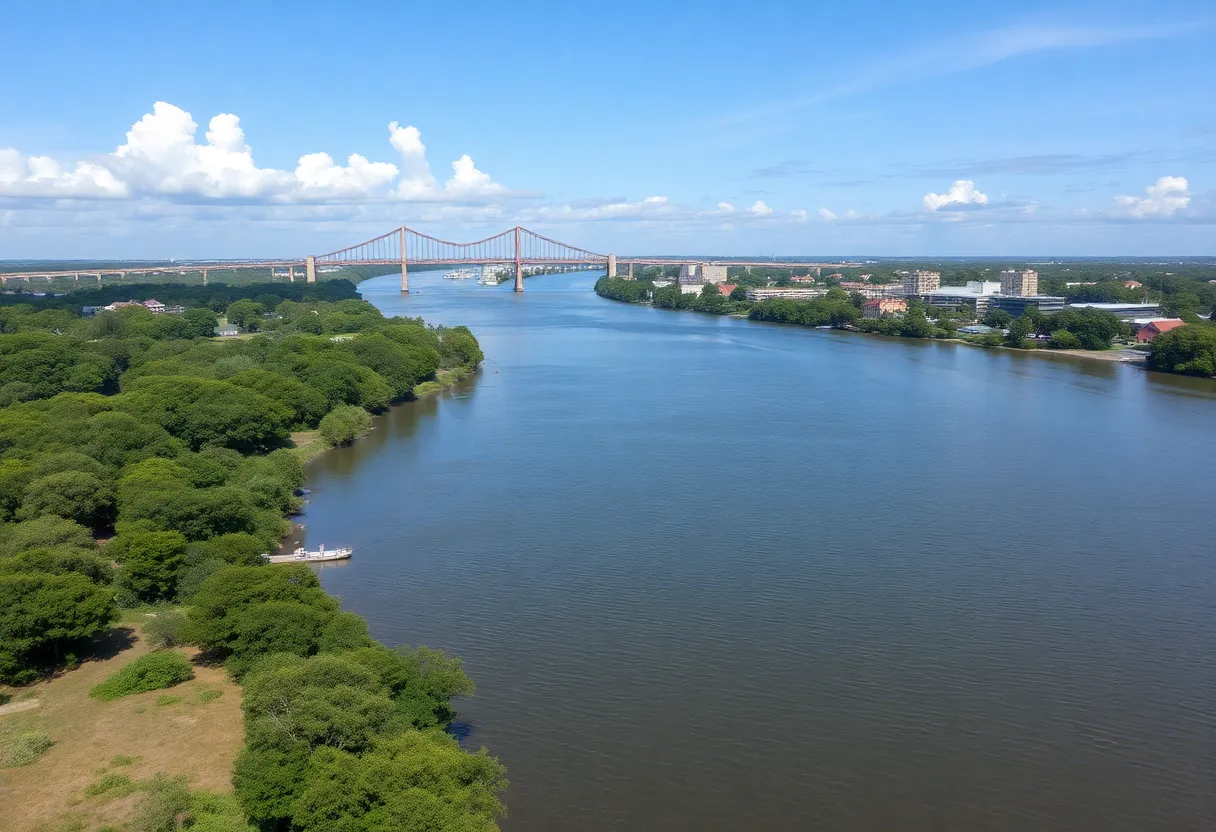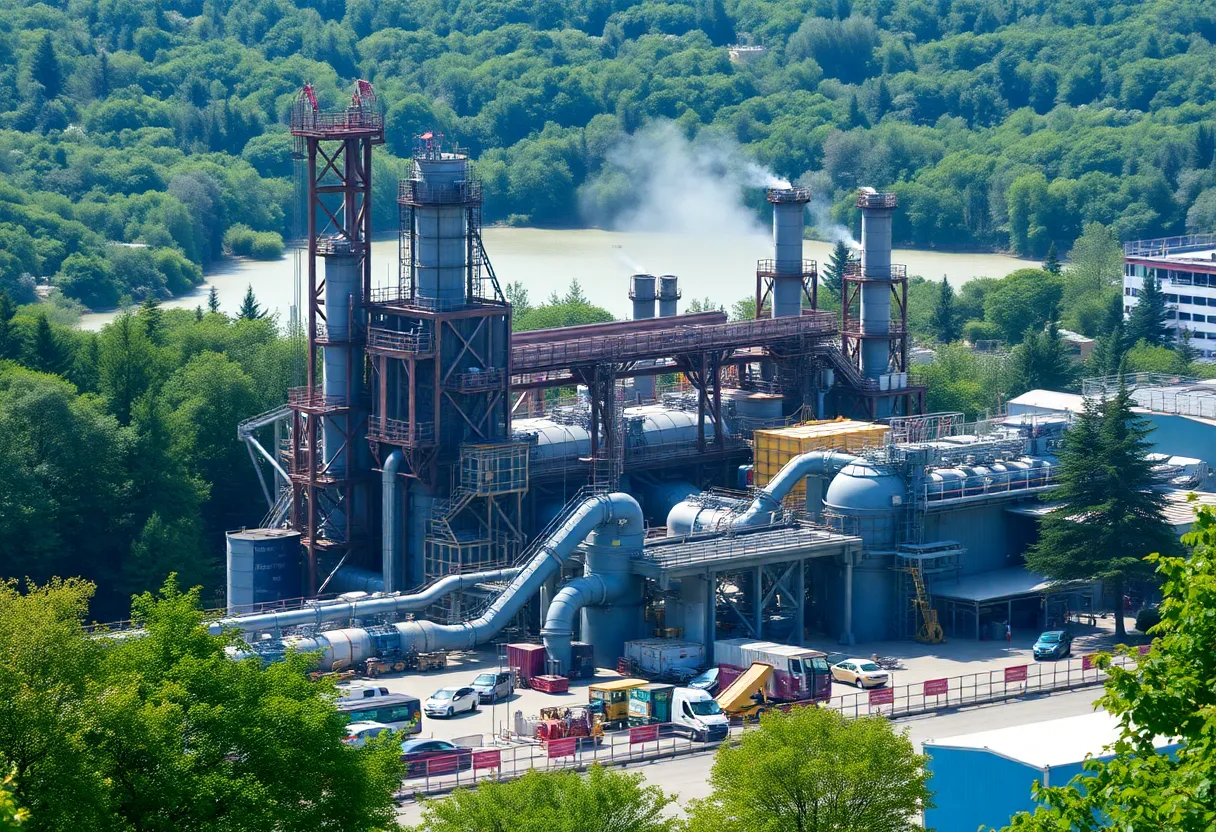News Summary
New Orleans breathes a sigh of relief as the Mississippi River crests lower than anticipated, alleviating flooding fears. Meanwhile, Plaquemines Parish grapples with ongoing saltwater intrusion issues, threatening water quality and local industries. The US Army Corps of Engineers is working on solutions, including the construction of an underwater barrier. Local leaders call for immediate investment to tackle these challenges and prepare for future environmental threats.
Good News for New Orleans: Mississippi River Cresting Lower Than Expected
The heart of Louisiana, New Orleans, has received some comforting news as the Mississippi River is cresting lower than initially predicted. The Army Corps of Engineers (USACE) has been keeping a close watch on the river levels, and the latest reports show the river is expected to remain below a hefty 1.25 million cubic feet per second. This is a relief for many folks in the area who were concerned about potential flooding.
Bonnet Carré Spillway Test Opening
In an effort to manage the river’s flow, a test opening of the famed Bonnet Carré Spillway took place last week in Norco, Louisiana, which is just about 33 miles upriver from the bustling city of New Orleans. This spillway plays a crucial role in diverting excess river water into Lake Pontchartrain to help keep the city safe from flooding. Luckily, it seems the current river levels won’t necessitate a full opening of the spillway—something everyone will be glad to hear.
The Ongoing Issue of Saltwater Intrusion
However, not everything is sunshine and rainbows in the region. Communities, particularly in Plaquemines Parish, are grappling with a persistent problem of saltwater intrusion that poses a risk to both public drinking water and the local seafood industry. This intrusion has cut into the fresh water supply for around 23,000 residents. Despite saltwater levels being low lately, the lasting effects have left infrastructure damaged.
Corrosion Causing Concerns
The saltwater intrusion doesn’t just stop at drinking water challenges. It has caused serious issues, such as rust and corrosion in water supply pipes. These damaging effects lead to frequent repairs, which not only disrupt service but also result in reduced water pressure—definitely not ideal for anyone relying on a steady supply. More troubling is the looming threat of lead pipe corrosion, raising concerns about potential lead in the drinking water.
Cost of Repairs Adds Up
Efforts to fix these problems and build more resilient infrastructure in Plaquemines Parish will require a whopping estimated investment of $200 million. With saltwater intrusion becoming a regular occurrence—this year marking three summers in a row of such challenges—it’s a pressing issue that local leaders simply cannot ignore.
Effects of Drought and Climate Change
The increase in saltwater intrusion can be chalked up to various factors, including drought, rising sea levels, severe storms, and even past dredging activities in the mighty Mississippi River. Just this year, saltwater came alarmingly close to encroaching on New Orleans, which prompted a short-lived state of emergency in the city.
Underwater Barrier Proposal
In response to these issues, the USACE has taken measures by constructing an underwater barrier, known as a sill, to keep saltwater away from New Orleans’s drinking water. This barrier is slated for a rebuild in the fall of 2024. City leaders have voiced their concerns over the fragility of the drinking water infrastructure in light of these environmental threats and have even issued boil water notices due to energy surges and treatment outages.
Calls for Action and Economic Impact
Local officials, including the Louisiana lieutenant governor, stress the importance of developing robust water solutions as the economic impact on tourism is closely tied to water quality. Restaurants and other local businesses are already facing operational hurdles due to damage caused by saltwater.
Investments for the Future
In a bid to tackle the ongoing saltwater intrusion dilemma, the U.S. Army Corps of Engineers is investing $20 million in a comprehensive management study. Local leaders insist that immediate action is imperative and oppose any delays in addressing these issues.
Preparing for Future Challenges
As the community grapples with these environmental challenges, preparation and proactive measures will be essential for the future. The residents of New Orleans and Plaquemines Parish remain resilient, ready to face whatever challenges come their way—all while keeping a hopeful eye on the waters ahead.
Deeper Dive: News & Info About This Topic
HERE Resources
11-Foot Alligator Spotted in Old Jefferson Community
Norco, Louisiana Prepares for Potential Flooding
New Orleans Port Project Faces Major Budget Overruns
Norco, Louisiana Prepares for Potential Floods as Spillway Opens
Advocating for Louisiana’s Petrochemical Industry Amidst Challenges
New Orleans Prepares for Bonnet Carre Spillway Opening
Plaquemines Parish Council Addresses Saltwater Intrusion Crisis
Riverfront Park Project Begins in New Orleans French Quarter
New Orleans Trial Could Impact Coastal Restoration Funding
CenterPoint Energy Sells Natural Gas Distribution Facilities
Additional Resources
- CBS News: Mississippi River Saltwater Intrusion
- Wikipedia: Mississippi River
- WWLTV: 11-Foot Alligator in Mississippi River
- Google Search: Saltwater Intrusion New Orleans
- Fox 8 Live: Barge Incident on Mississippi River
- Google Scholar: Saltwater Intrusion Mississippi River
- NOLA: Vessel Collision Report
- Encyclopedia Britannica: River
- WGNO: Vessel Collision and Barge Sinks
- Google News: Mississippi River Flooding

Author: STAFF HERE NEWORLEANS WRITER
The NEW ORLEANS STAFF WRITER represents the experienced team at HERENewOrleans.com, your go-to source for actionable local news and information in New Orleans, Orleans Parish, and beyond. Specializing in "news you can use," we cover essential topics like product reviews for personal and business needs, local business directories, politics, real estate trends, neighborhood insights, and state news affecting the area—with deep expertise drawn from years of dedicated reporting and strong community input, including local press releases and business updates. We deliver top reporting on high-value events such as French Quarter Festival, New Orleans Jazz & Heritage Festival, and Essence Music Festival. Our coverage extends to key organizations like the New Orleans Chamber of Commerce and Greater New Orleans, Inc., plus leading businesses in energy, healthcare, and education that power the local economy such as Entergy, Ochsner Health, and Tulane University. As part of the broader HERE network, including HEREShreveport.com, we provide comprehensive, credible insights into Louisiana's dynamic landscape.



